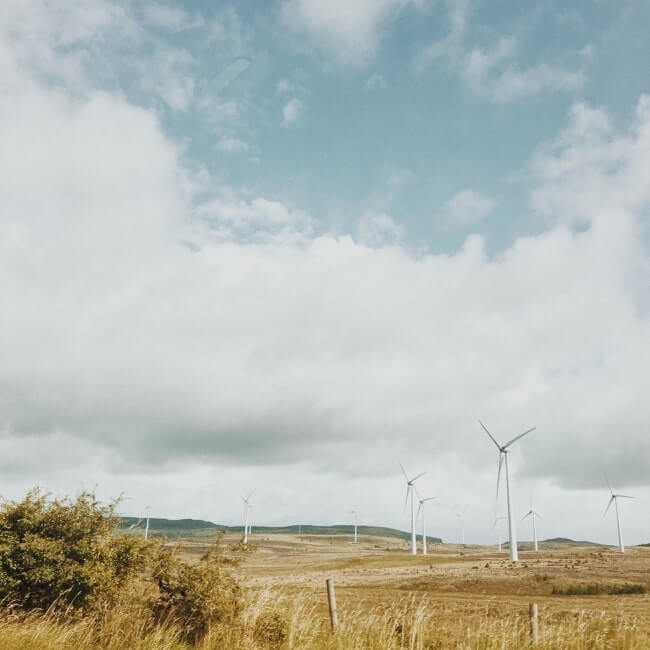Datacenters and the power grid conundrum

Brazil is becoming a victim of its own technological success, as Latin America's largest market for hyperscale datacenters is seeing these power-hungry facilities exert growing pressure on the grid.
“We carried out a survey recently and estimated that the consumption of commercial datacenters in Brazil is currently around 1GW and our energy matrix ended 2022 at 185GW [of available power],” said Luis Tossi, VP of local datacenter association ABDC, during an online event hosted by the group.
To make matters more pressing, the rise of artificial intelligence and ChatGPT – which require more processing power – are set to crank up the pressure on electric power grids even further.
“The major concern of some datacenter companies in Asia right now is how to meet ChatGPT demands, because [clients] are asking for 30MW, 40MW of power for the next few months. So we're talking about something we don't know yet,” said Ascenty's VP of datacenter design, engineering and construction, Felipe Caballero.
Ascenty has 23 datacenters in operation in Latin America and 11 under development in Brazil, Mexico, Chile and Colombia, with a combined 533MW in power capacity.
The company's first datacenter, launched around 12 years ago, was projected to have 8MW of power capacity, according to Caballero.
From the point of view of power delivery, projects with up to 2MW or 2.5MW of power are considered medium voltage; above that level, the country's distribution system may not be able to meet demand.
“This means I can't put my datacenter anywhere I'd like to. Is there power nearby, is there a connection? That's the first question,” said Caballero.
This is one of the reasons why Ascenty does not operate in the edge segment or with datacenters outside large clusters and urban centers.
As the company only builds on customer requests, and its customers are mainly hyperscalers, Ascenty ends up concentrating sites in regions with ample power availability and telecom connections, which tend to be in large urban centers or metropolitan regions.
According to Caballero, Ascenty's customers have not yet requested sites in locations other than São Paulo.
Ascenty's controller Digital Realty reported over 127MW in IT load capacity for Ascenty’s LatAm datacenters as of end-2022.
This is divided as follows: 95.2MW for São Paulo area datacenters, 10.2MW for Santiago, Chile, 8MW in Querétaro, Mexico, 8MW in Rio de Janeiro and 6.2MW in Fortaleza, Brazil.
Ascenty projects it will need around 80MW for datacenters in its Vinhedo and Hortolândia campuses in São Paulo over the next two or three years, according to Caballero.
CHAIN EFFECT
Negotiations with power transmission and distribution companies are also difficult.
It is not just plug-and-play, power firms say, as an extra-large load on the grid impacts users in general. On the other hand, if it is necessary to build new lines or new substations to supply a datacenter, it takes time and the project must go through various stages of licensing, approval and construction.
Predictability is another issue.
Caius Vinicius Sampaio Malagolli, engineering director at power distributor CPFL, said that if CPFL invests to expand its grid based on a request from a datacenter provider and the project does not go ahead or changes over time for some reason, the power company will suffer losses.
CPFL's consumers could end up having the costs of such a project passed on to their electricity bills and the company could also be fined.
“If I make the investment, I contract not only power [from generators] but also the expansion areas. If the datacenter company gives up halfway through, I'm penalized by legislation for having been over-contracted,” he said.
Despite that, Malagolli said that CPFL is prepared to meet the demand for large hyperscalers in São Paulo, although not necessarily at the speed desired by companies.
In the next five years, in the metropolitan regions comprising Vinhedo and Hortolândia, for example, CPFL will add almost 2GW of power capacity to the general electricity distribution market, said the executive.
In 2022, CPFL invested around 4bn reais (US$790mn) in its operations.
Tazai Burin, corporate manager at Enel Brasil, said that distribution is highly regulated, with different rules that need to be met in terms of availability, distribution and customer support services.
He pointed out that construction of a transmission line or a new substation involves different players, and eventually the national grid operator (ONS) and federal energy research firm EPE.
“There is a queue to be met. It's not possible to serve each one individually. If Ascenty, Odata or Scala ask for the same 60MW, I need to consider all of that simultaneously for my planning,” said Burin.
Despite that, in November Scala signed a long-term deal with the Enel group to ensure the power supply of its existing and future datacenter projects in Latin America.
The agreement secures at least 600MW of power for Scala’s Tamboré hyperscale campus in São Paulo state and almost 1GW for other Brazilian and Latin American operations.
According to the latest research by Aritzon, the Latin American datacenter construction market is expected to grow at a CAGR of 9.3% in 2022-28, reaching US$1.86bn in investments at the end of the period. However, these figures now seem somewhat conservative.
Brazil represents around 50% of the total datacenter park in Latin America, which currently comprises under 200 datacenters, according to Brenno Marks, sales and business development manager at the datacenter segment for ABB.
This compares to around 2,000 colocation and hyperscale datacenters in the US and 1,300 in Europe, Marks said in a separate panel at the event.
"Having 90 datacenters in Brazil is just too little compared to the demand we have, latency issues, the arrival of 5G, the increase in traffic volume," the ABB executive added.
Subscribe to the leading business intelligence platform in Latin America with different tools for Providers, Contractors, Operators, Government, Legal, Financial and Insurance industries.
News in: Electric Power (Brazil)

Are Enel’s days numbered as São Paulo electricity concessionaire?
BNamericas talks with experts about the risk of the Italian energy giant losing its concession due to a massive supply interruption occurring in th...

Brazil’s gas imports expanding
The volumes registered this year have already surpassed 2023 figures, according to federal government data.
Subscribe to Latin America’s most trusted business intelligence platform.
Other projects in: Electric Power (Brazil)
Get critical information about thousands of Electric Power projects in Latin America: what stages they're in, capex, related companies, contacts and more.
- Project: Mutamba IV wind farm (Kairós wind complex - Phase II)
- Current stage:

- Updated:
2 days ago
- Project: Kairós Wind 9 wind farm (Kairós wind complex - Phase II)
- Current stage:

- Updated:
2 days ago
- Project: Kairós Wind 8 wind farm (Kairós wind complex - Phase II)
- Current stage:

- Updated:
2 days ago
- Project: Kairós Wind 10 wind farm (Kairós wind complex - Phase II)
- Current stage:

- Updated:
2 days ago
- Project: Ventos de São Zacarias 3 Wind Farm (Ventos de São Zacarias Wind Complex)
- Current stage:

- Updated:
2 days ago
- Project: Ventos de São Zacarias 8 Wind Farm (Ventos de São Zacarias Wind Complex)
- Current stage:

- Updated:
2 days ago
- Project: Ventos de São Zacarias 9 Wind Farm (Ventos de São Zacarias Wind Complex)
- Current stage:

- Updated:
2 days ago
- Project: Ventos de São Zacarias 10 Wind Farm (Ventos de São Zacarias Wind Complex)
- Current stage:

- Updated:
2 days ago
- Project: Canis 2 photovoltaic plant (Canis solar complex)
- Current stage:

- Updated:
2 days ago
- Project: Kairós Wind 4 wind farm (Kairós wind complex - Phase II)
- Current stage:

- Updated:
2 days ago
Other companies in: Electric Power (Brazil)
Get critical information about thousands of Electric Power companies in Latin America: their projects, contacts, shareholders, related news and more.
- Company: Abengoa Construção Brasil Ltda. (Abengoa Brasil)
-
Abengoa Brasil is the local unit of Abeinsa, the engineering and construction unit of Abengoa S.A. It offers engineering, construction, operation, maintenance and technological ...
- Company: Grupo Novonor (Novonor)
-
Novonor, formerly known as Odebrecht, is a Brazilian holding company present with operations in 14 countries, including Argentina, Brazil, Colombia, Ecuador, Mexico, Panama, Per...
- Company: Energizzi Energias do Brasil Ltda. (Energizzi)
-
The description contained in this profile is taken directly from an official source and has not been edited or modified by BNamericas researchers, but may have been machine tran...
- Company: Qair Brasil Participações S.A. (Qair Brasil)
-
Qair Brasil, antes Quadran Brasil, es un productor independiente de energía (IPP) y subsidiaria local de la empresa internacional Qair. Con sede en Fortaleza, en el estado brasi...
- Company: Gás Natural Açu Ltda. (GNA)
-
Gás Natural Açu Ltda. (GNA), founded in 2010 and headquartered in Rio de Janeiro, is a Brazilian company aimed at LNG storage and production which operates as a subsidiary of th...
- Company: Níon Energia
-
The description contained in this profile is taken directly from an official source and has not been edited or modified by BNamericas researchers, but may have been machine tran...
- Company: WEG S.A. (WEG)
-
The description included in this profile was taken directly from an official source and has not been modified or edited by the BNamericas’ researchers. However, it may have been...
- Company: Ventos de São Vitor 02 Energias Renováveis S.A. (Ventos de São Vitor 02 Energias Renováveis)
-
The description included in this profile was taken directly from an AI source and has not been edited or modified by BNamericas researchers. However, it may have been automatica...
- Company: Dom Atacarejo S.A.




